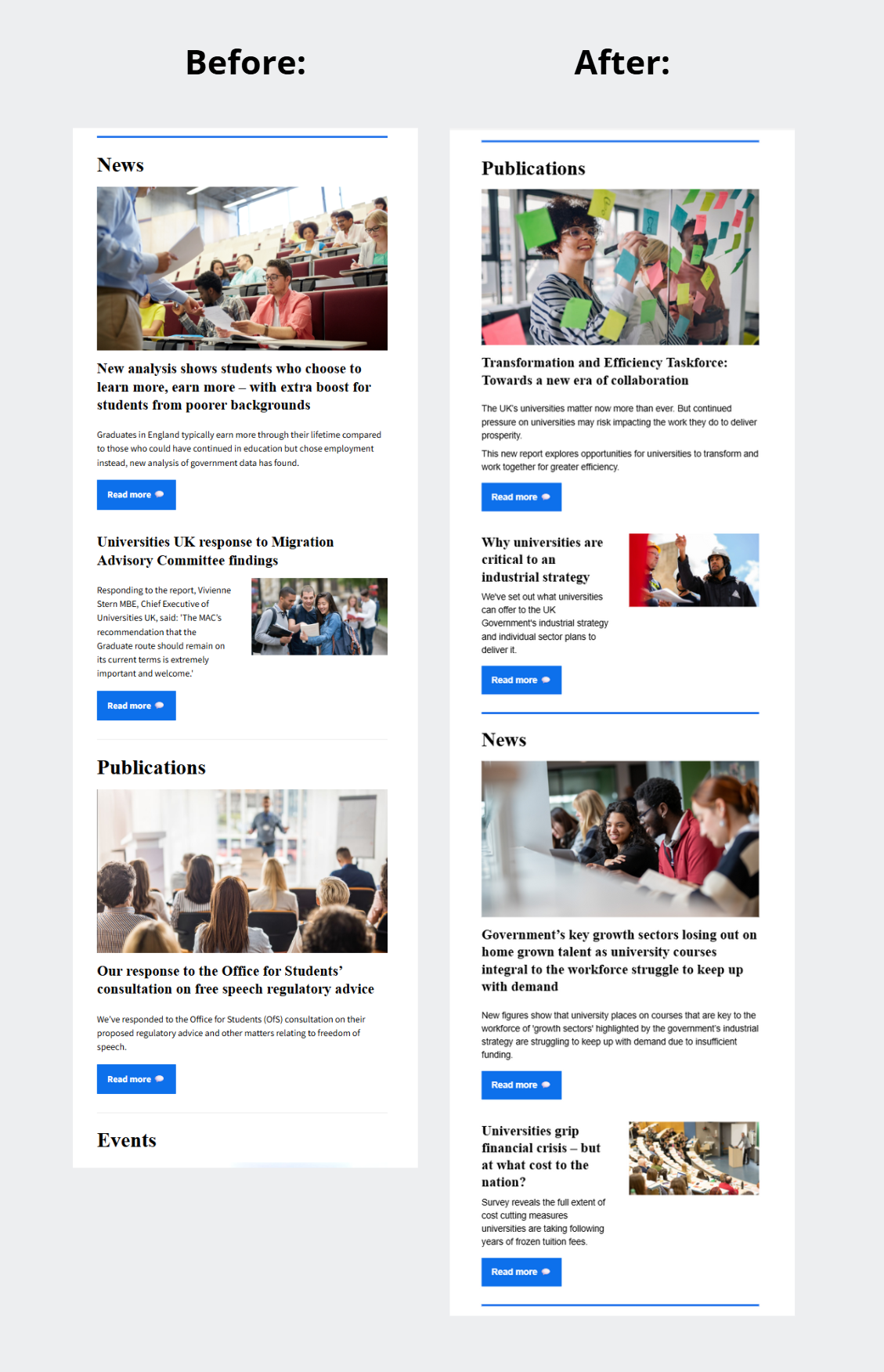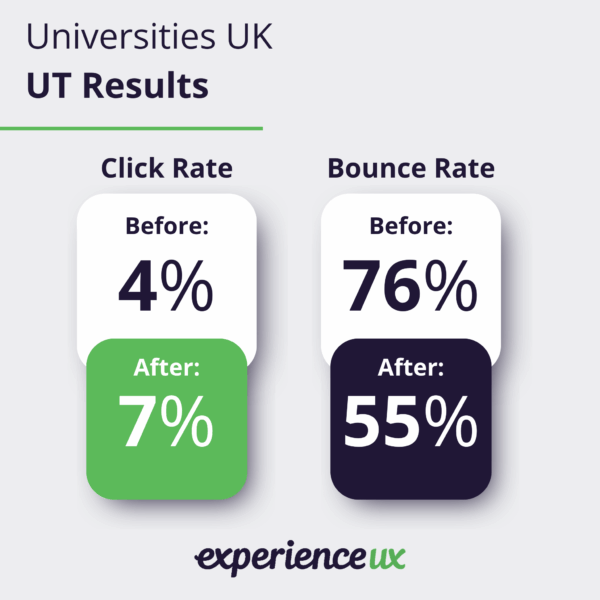
Case Study Universities UK
Case Study Universities UK

This is the story of how Experience UX (EUX) helped Universities UK (UUK) to achieve improved email newsletter performance with our Agile Usability Testing. We particularly love that UUK continues to strive to deliver genuine value for their readers and website users.
At Experience UX we mostly help clients to improve the user experience of their websites. However, any organisation’s digital estate is always broader than the typical landing page customer journeys, so we love it when we get to work on a more specific digital channel. In this case, our client’s goal was to improve the performance of their monthly email newsletter.
Universities UK (UUK) is the collective voice of 141 UK based universities, bringing them together to pursue a common cause: thriving universities, serving society. UUK works with the government and higher education sector to champion UK higher education.
After months of experimentation with format and content the UUK digital team’s efforts to improve newsletter performance had plateaued and they were uncertain how best to reliably grow their readership. They requested help from an Experience UX Usability Test.
With a core aim to increase their newsletter audience the UUK newsletter was evolving, but the digital communications team required evidence to guide its direction. The team had been experimenting with different formats, tones and content but needed clearer answers to questions, including:
Whilst we were exploring the newsletter with their target audience, UUK also required insight into the newsletter sign-up journey, and what might encourage more people to subscribe.

Findings suggested listing the newsletter contents to begin.
We designed an agile, research-driven project to deliver insight and actionable recommendations quickly. In just two weeks we moved from kick-off to delivery.
During the research sessions we presented a combination of UUK and peer newsletters to our participants, who represented the target audience, to establish how they naturally interacted with the content. We explored:
Meanwhile, the UUK team joined our private YouTube channel and notetaking board, offering them a first-hand observation of how their target audience react and interact with their newsletter and content.
Improvements we’ve made to the newsletter design and content informed by EUX’s Agile Usability Testing has led to an increase in clicks and website visits as a result. The people clicking on links on the newsletter are also now exploring more content on the site.
Sofia Henderson, Senior Content Producer
From the research sessions several clear themes emerged – some expected, some surprising.
Anyone managing a company newsletter will know this, but taking the time to ensure clarity in the subject line and introduction will boost readership and improves the user experience.
This is a good example of how moderated, one-to-one, usability testing provides deep insight and presents ‘gold nugget’ insights in understanding your audiences’ subtle preferences.

Providing a break line between content sections allows readers to scan the content easier.
The content team moved fast and implemented a handful of simple but effective changes to the newsletter, including:
The Impact
The improvements are already showing results. Comparing performance before and after the updates – Click rate increased from 4% to 7%, Bounce rate decreased from 76% to 55%.

Early signs suggest that not only are more people clicking, but they’re sticking around longer once they arrive. For any organisation using newsletters to engage an audience, this project is a reminder of a few important truths:
If you’re rethinking your own digital content, or wondering why engagement has plateaued, this kind of focused, user-led research can offer the clarity and direction you need.
You can sign up to the UUK newsletter here: UUK Newsletter
“Experience UX always deliver actionable recommendations with their findings, this helps us to fast-track improvements.”
 Sofia Henderson, Senior Content Producer, Universities UK
Sofia Henderson, Senior Content Producer, Universities UK
CASE STUDY
A series of user profiling workshops to uncover staff and volunteers’ future ways of working.
CASE STUDY
Moderated and unmoderated user research to capture users’ emotional response to homepage designs.
CASE STUDY
An evidence-based approach to define the way forward for Education Training Foundation’s digital roadmap.
Let’s discuss how user research and usability testing will lighten your load and upgrade your users’ experience.
If you’d like to know more about how user research, usability testing and service design solutions can help you, then get in contact and make our day!
01202 293652 amyhunter@experienceux.co.uk